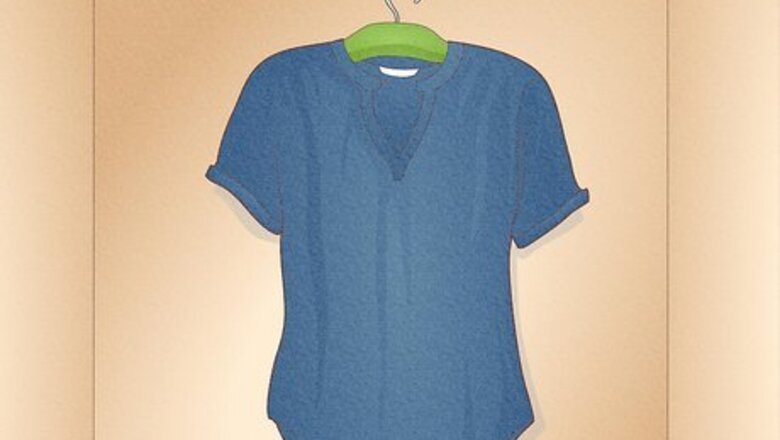
views
Hanging Tops and Dresses
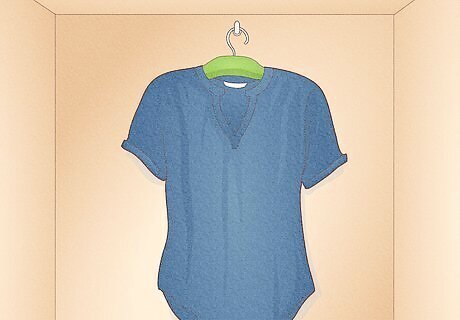
Hang blouses on padded hangers. Choose fabric-covered hangers with some padding to protect thin blouses from getting ripples and bumps. If you have blouses made of delicate fabrics, such as lace or silk, choose satin-covered hangers to keep your garments from snagging and becoming damaged. Typically, fabric-covered hangers have a wooden or plastic inner structure.
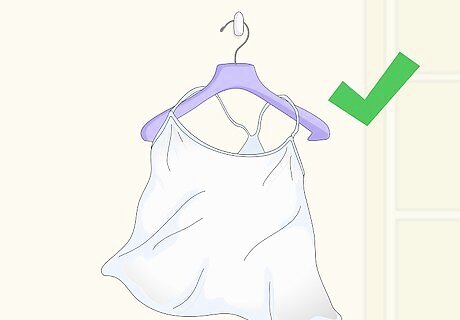
Use velvet-coated hangers on spaghetti-strap tops. Keep thin straps from slipping off the hanger by using velvet- or rubber-coated plastic hangers. These will secure your delicate garment without stretching or distorting the thin straps. Some velvet hangers also have small nubs or indents to prevent thin straps from sliding off.
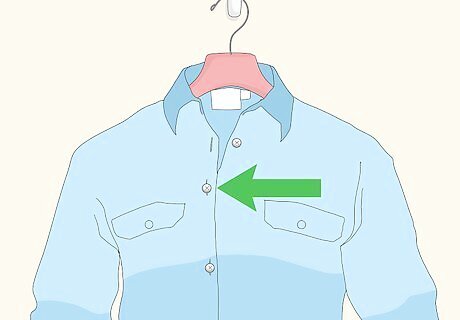
Secure the second-to-top button of oxfords and polos before hanging. Button the second-to-top button of your dress shirts to help them retain their shape and collar structure while hanging. Wooden hangers that follow the shape of the shoulder are best and will keep the seams along the top of the shirt from rippling. Casual T-shirts don’t need to be hung unless you’d prefer to do so. Simply fold them and store them in your drawers.
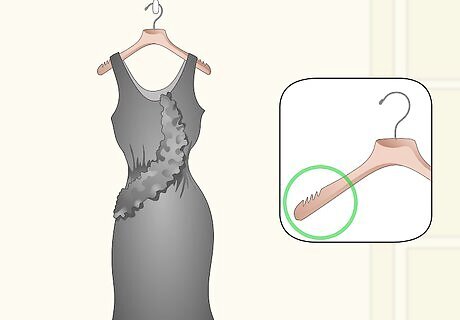
Hang dresses and jumpsuits vertically unless they’re embellished. Use wooden or plastic hangers with shoulder grips to hang jumpsuits and dresses. Fold heavily embellished jumpsuits and dresses gently, placing a piece of tissue between the folds. Store them in a large garment box to help them retain their shape. The tissue paper will keep beads and sequins from rubbing and damaging each other.
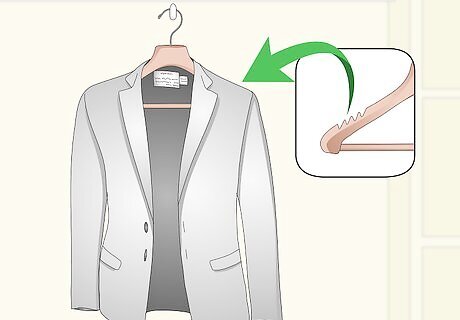
Hang blazers and sport coats on wishbone hangers with shoulder grips. Help your structured garments keep their silhouettes by using contoured hangers with non-slip shoulders. These wooden or plastic hangers have a special shape that will help the shoulders of your garments hold their structure when hanging. Avoid using wire hangers in general, but especially for structured coats. These thin, unpadded hangers put pressure on delicate seams and can misshape heavier garments.
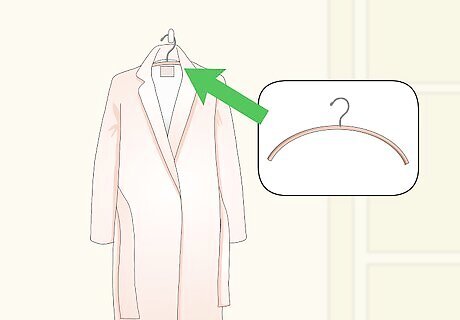
Hang overcoats on curved hangers to accommodate their weight. Choose curved wooden hangers or thick plastic hangers to support your heavy outerwear. Thinner plastic and wire hangers may buckle under the weight of substantial winter coats. If your coat is very heavy, zip or button it around the hanger to help keep the shape of the shoulders.
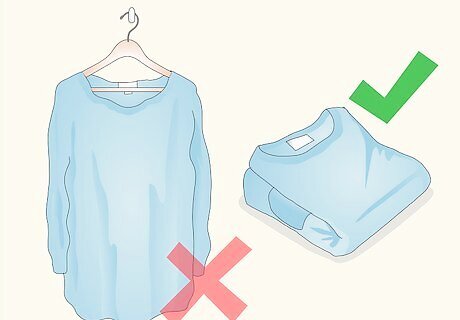
Fold sweaters instead of hanging them. Store your sweaters folded in your closet to preserve their shape. Hangers can stretch the shoulders of sweaters and distort them. However, it is possible to hang sweaters if you do so correctly; see How to Hang Sweaters for details.
Hanging Bottoms
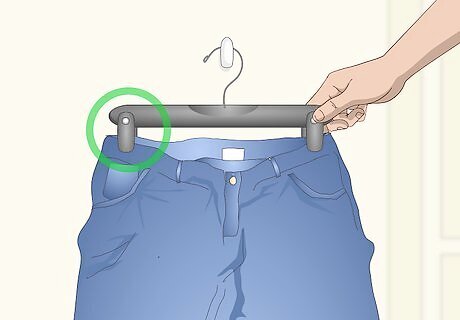
Hang pants by clips at the waist. Secure your pants by using hangers with clips on either side of the waist. If your pants have a larger waist measurement, fold them in half along the central seam and clip them with the waistband doubled over. If possible, select a hanger with padded rubber on the interior of the clips. The passing will keep your pants from getting marks at the waist from being pinched. Multi-hangers are a great way to save space but may make your pants more prone to wrinkling.
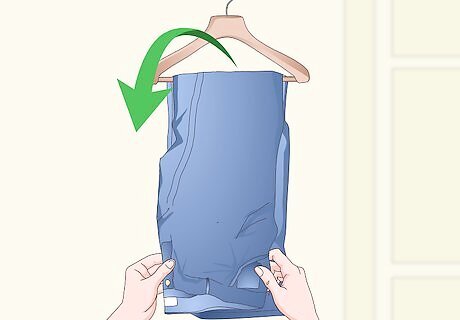
Fold pants over the bar if you don’t have a clip-style hanger. Fold your pants along the crease and thread them over the central bar of a wooden hanger as an alternative hanging method. This will keep their weight evenly distributed. Note that open-sized specialty hangers for pants are often wire. These may be more likely to wrinkle and crease your pants.
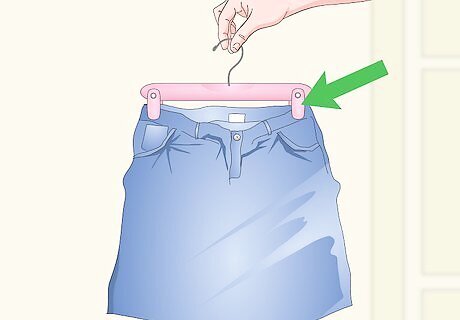
Hang skirts at the waist with clips unless they’re embellished. Use a clip-style hanger to secure your skirts at the thickest part of the waistband on either side. For embellished skirts with heavy beading or embroidery, fold them with a piece of tissue paper in between to protect the detailing. Store them in a garment box. Clips will damage embellishments. Using tissue will help preserve these fine details best.
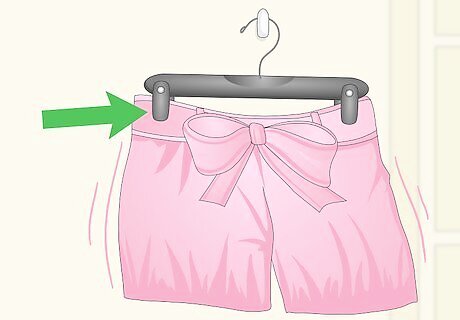
Clip thin dress shorts so they hang freely. Use a hanger with clips to secure dress shorts by the waistband, one on either side of the waist. Shorts made of thicker materials, such as khaki, can likely stand up to folding along the crease and do not need to be hung. They are less susceptible to wrinkling.
Avoiding Common Problems
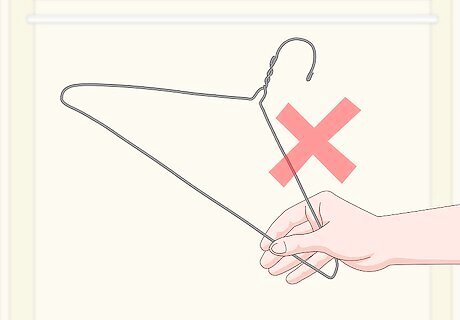
Avoid using thin metal hangers. Steer clear of wire hangers, which have no padding and tend to stretch and distort clothes. Plastic or wooden hangers are typically thicker and can provide your clothes with more support. Thick metal hangers are superior to wire but still have the potential to distort clothes compared to plastic or wood.
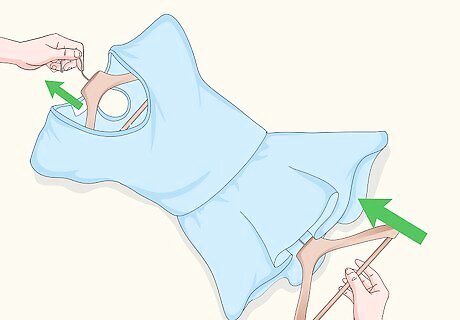
Insert hangers into shirts and blouses from the bottom. Thread your hanger through the body hole at the bottom of your shirt and up through the neckline. Inserting a hanger through a small neck hole can stretch and deform the neck opening. This method is not necessary for dresses that unzip, allowing easy hanger insertion at the top.
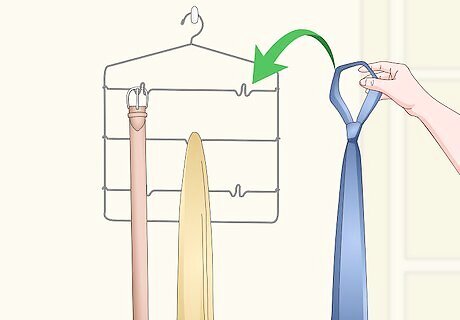
Organize your accessories with a multi-hanger. Keep scarves, belts, ties, and other accessories tidy by using a specialty hanger with many individual hooks. This will keep your delicate accessories from wrinkling and allow you to accessorize with ease.
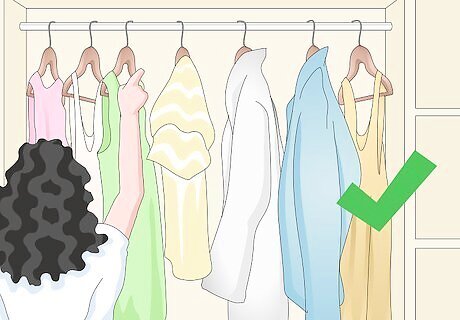
Keep crowding to a minimum to avoid wrinkling your clothes. Avoid overstuffing your closet to keep your clothes looking neat. If your clothes are so packed into the closet it’s difficult to remove an item without disturbing others, hang some items in another closet or consider letting go of the items that are taking up space. EXPERT TIP Julie Naylon Julie Naylon Professional Organizer Julie Naylon is the Founder of No Wire Hangers, a professional organizing service based out of Los Angeles, California. No Wire Hangers provides residential and office organizing and consulting services. Julie's work has been featured in Daily Candy, Marie Claire, and Architectural Digest, and she has appeared on The Conan O’Brien Show. In 2009 at The Los Angeles Organizing Awards she was honored with “The Most Eco-Friendly Organizer”. Julie Naylon Julie Naylon Professional Organizer Use the layout of your closet to dictate what you should hang or fold. If you have more shelf space than hanging space, fold your pants and put them on a shelf. If you have a lot of hanging space, you can put T-shirts on hangers, even though T-shirts are typically folded. Let the design of your closet guide you in how you organize your clothes.




















Comments
0 comment